On Sacred Grounds: Coffee
“‘All aboard,’ cried the conductor as the steam whistle underscored his cry. ‘Oh, dear, the train’s leaving,’ said a traveler at the lunch counter, ‘and my coffee’s too hot to drink.’ ‘Drink mine, Ma’am—hit’s already been saucered and blowed,’ said a gentleman in the days before Styrofoam. Thanking this stranger, she gulped down his coffee, collected her sandwich, and ran to catch the train.”—Skip Eisiminger
Skip the B.S.
By Dr. Skip Eisiminger
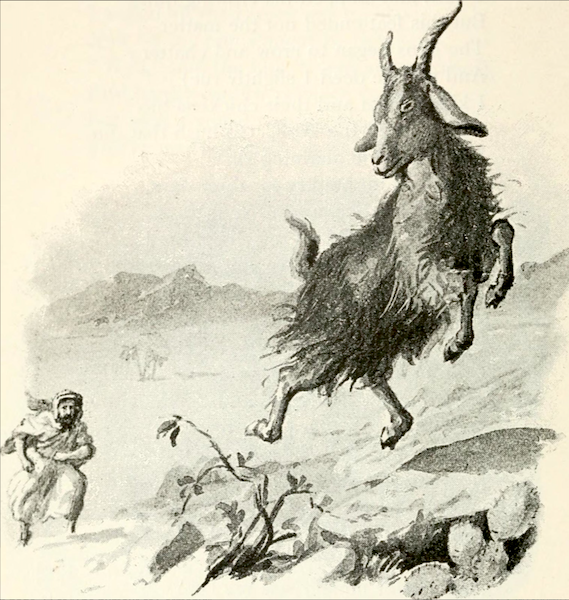
I. “The powers of a man’s mind are directly proportional to the quantity of coffee he drinks.”—Sir James Mackintosh, c. 1800.
CLEMSON South Carolina—(Weekly Hubris)—1 September 2022—According to a legend I’ve embroidered around the margins, in around 1450, Kaldi, an Abyssinian goatherder, was nursing a hangover as he led his flock into the forested hills of Kaffa. Watching his flock gaily prancing about after eating some fallen fruit, he wondered if it wouldn’t put him in a better frame of mind. He then mashed some of the bitter berries, including the pits, added some suet that he was saving for lunch, rolled the concoction into a ball, and ate it. A few minutes later, his head still ached, but he was euphoric. After discussing his findings with family and friends, he sold his goats, swore off alcohol, and started selling “Kaffa suet balls,” which promised “a preview of paradise.”
Before long, the nearby port of Djibouti was exporting Kaffa’s fruit across the Gulf of Aden to Mocha, where the Yemenis hastily rebranded the pits “arabica.” Some inspired Sufi monk decided that discarding the fruit’s pulp, drying the pits, grinding them, and then boiling the coarse grounds might make a transcendental brew without the suet. When Yemeni traders inhaled the aroma of the roasting pits that defied definition, they decided that “beans” would be easier to sell than “pits,” and soon qahwah, or “dark drink,” sold with the option of a spoonful of honey and a dash of goat’s milk, was being brewed across the Middle East. By 1600, Istanbul alone had some six hundred coffee houses. To break an Ottoman monopoly, some colonial Dutchmen planted smuggled kaffa “beans” in Java and sold what they’d harvested in Rotterdam. Envious of the obvious Dutch success, Venetian traders began their own “black market operation,” smuggling the “beans” into Southern Europe where the aroma alone seduced a continent. Meanwhile, farm and industrial workers, as distant as the tea plantations of Sri Lanka, were taking “coffee breaks” encouraged by the owners. After all, cup for cup, coffee had twice the caffeinated kick that tea had.
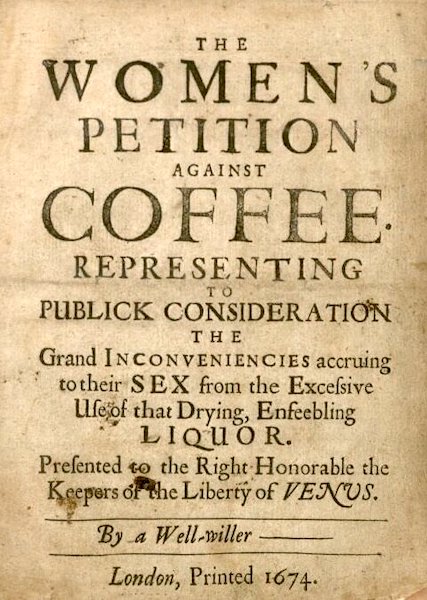
II. “Without coffee, nothing gets written. Period.”—Nancy Kress
As I hope my origin tale has shown, coffee’s history is fascinating, and here are a few more of the highlights:
- Any date before 1450 is considered “BC,” “before coffee,” and is suspect.
- Spinning off the name Kaffa, the region of Abyssinia (present-day Ethiopia) where nature first blessed humanity with the coffee tree, Turks called their drink kahveh, the Dutch called it koffie, the Russians called it kofe, the Japanese called it kohi, Icelanders called it kaffi, etc.
- In 1610, coffee’s detractors like the British poet George Sandys described it as “Blacke as soote and tasting not much unlike it.”
- Coffee supporters countered saying it was the only “sober liquor.”
- In 1637, a student from Crete was expelled from Oxford for brewing coffee, but by the 1650s, a daring group of Oxford scientists were drinking the illicit brew at Tillyard’s Coffee House and calling themselves the Oxford Coffee Club.
- After the English Civil War in 1651, coffee houses functioned as “penny universities,” promoting as they did cross-cultural discourse seldom heard in the pubs.
- In 1657, coffee was acknowledged to help workers “play the good-fellows” because, doctors said, “it balanced the body’s humors.”
- In 1660, Charles II, acknowledging the scientific progress made by Robert Boyle and other members of the Oxford Coffee Club, granted the club a royal charter and renamed it the “Royal Society.”
- By 1675, however, the English royal family was doing its best to outlaw coffee houses while drinking the “smoking tide” behind palace walls, where to paraphrase Alexander Pope, the berries continued to crackle, and the mill went round.
- In 1676, after learning of anti-royalist sentiments among his Royal Society’s members, Charles banned the organization, a ban that lasted eleven days.
- Seventeenth-century coffee traders claimed that the drink cured gout, aided digestion, and prevented miscarriages.
- In 1674, British women complained that coffee made their husbands impotent. In response, coffee-shop owners did not offer their female customers restrooms, but a century later, coffee was being touted as a cure for impotence.
- In 1735, J. S. Bach’s “Coffee Cantata” featured a spoiled daughter who insisted she would only marry if her father guaranteed her a generous coffee supply. It appears that Bach was writing from personal experience, for he wrote that he felt like “dried goat meat” if he didn’t get three bowls daily.
- To Nancy Kress’s point above, Voltaire reportedly drank forty cups a day; Balzac drank fifty.
- In 1777, Frederick the Great of Prussia said, “Everybody is drinking coffee. If possible, this must be stopped. My people must drink beer.” The people, however, were undeterred.
- European political scientists realized that the free discourse across the classes they were hearing in seventeenth- and eighteenth-century coffee houses was the rebirth of Athenian democracy.
- During the American Revolution, supporters of the revolt switched from drinking British tea to coffee.
- Eighteenth-century coffee promoters went too far in claiming black coffee had a detoxicating effect when only time was effective. This bogus and dangerous claim came to be called the “coffee myth.”
- In 1884, Angelo Moriondo introduced the espresso machine that produced what some would call the “quintessence of coffee.” A fan of decaf calls it “a feral brew.”
- In 1895, Hermann Fischer, a German chemist, coffee drinker, and later a Nobel laureate, finally synthesized caffeine. Incidentally, caffeine is the only drug that has been an active participant in the discovery of its chemistry. Later trials revealed that ten grams of the white powder is a lethal dose.
- Nineteenth-century doctors claimed coffee prevented asthma and colon cancer. Too much, others said, caused phobias, heart attacks, and osteoporosis.
- In WWI, machine guns were called “coffee grinders” because of the similarity of the motion needed to operate both machines. Striptease artists were given the same nickname after the circular motion of the women’s hips.
- By the twentieth century, impertinent Americans had dubbed coffee “liquid sex” while insisting it be, “black as sin, strong as the devil, and hot as hell.”
- Five cups of black coffee consumed daily was called the “coffee abortion” for those without access to safe surgery. Likewise, the “coffee enema” was touted to promote digestive health. Neither procedure was deemed safe.
- About 1940, Edgar Cayce, “the sleeping prophet,” declared coffee is safe to drink, but, he added, “It should never be consumed with cream.” No word on sugar.
- Working through the UN beginning in 1962, the “fair-trade coffee movement” sought to alleviate the misery of the world’s coffee farmers.
- In 1983, vacationing Howard Schultz, Starbucks’ “first mate,” had a caffeine epiphany in a Milan coffee house. Cell phones and laptops, however, blocked any attempt to make the American knockoffs “four-bux universities” like their eighteenth-century European counterparts.
- In the 1980s, doctors claimed that too much coffee led to phobias and panic attacks. Others claimed that decaf prevented heart disease.
- In 2019, Klatch Coffee’s “Elida Geisha Natural 803” was selling for $75 a cup. I’m told they have sold out; there is no more.
- A study published in 2022 revealed that customers spent 50% more if they drank a free shot of espresso on entering the grocery.
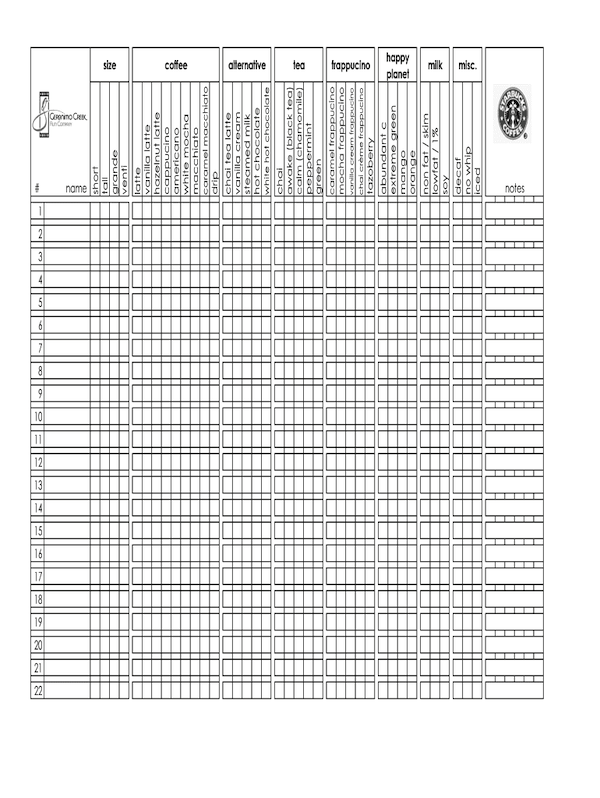
III. “Lord, give me coffee to change the things I can, beer to accept the things I can’t, and wisdom to know the difference.”—Anonymous (with a little help from the Wordspinner).
One of the joys of coffee for a word nut like me is the language associated with it. If you don’t like the stuff, it’s “mud” (because its grounds are black as dirt), “squid ink,” “sludge,” “varnish remover,” “embalming fluid,” “break fluid,” or “battery acid.” If you love it, it’s “inoculatte” (because jokingly it’s said to be taken intravenously by “coffee-holics”), “cupped lightning,” “rocket fuel,” or “liquid intelligence.” If you know something of coffee’s associations with Mocha (Yemen) and Java (Indonesia), you might call it “jamoka” or just “Joe,” which may be why Joe DiMaggio was chosen as the spokesman for “Mr. Coffee.” If you’re not part of the 7% of Americans who think espresso is an overnight delivery service, this Italian concentrate is the “God shot” or a “coffee smoothie.” If you like yours straight, you’ll want it “barefoot” or “cowboy style.” Dress your “bare feet” in “socks,” and it will be served with a shot of cream. If you prefer cream and sugar, you’ll order it “blond and sweet.” If you like your latte with a shot of espresso, you may order it “dirty.” If you switch between caffeinated and decaffeinated to calm your nerves, you are switching between “leaded” and “unleaded.” If you’re fluent in Italian and French, you may confidently order an affogato frappuccino. You may also understand why Starbucks’ small cup is a “tall,” not a “piccolo,” or a hot venti is twenty ounces and one served cold is twenty-four ounces. If French is your “cuppa,” you may order “café au lait” or a “French press.” If Spanish is your language, it’s “café con leche.” If it’s Arabic, you’ll recognize “zarf,” the metal or cardboard sleeve that hot coffee is served in. And if you were born before 1960, you might recall that your coffee options were limited: your waitress could “draw one” with or without the “cow.”
Speaking of the options available today, one of the most inflated Starbucks’ orders on record (the receipt is available online), consisted of 27 ingredients or special requests. In short, this neurotic customer ordered a Frappuccino with lactose-free milk, extra caramel drizzle, extra Greek yogurt, foam chilled to 34°, a blueberry topping with the milk frothed, etc. I’d love to know what he paid for it.
Before leaving the beverage, I should say a word about the places where it’s served. Long before the TV sitcom Friends was set in “Central Perk” within view of New York’s Central Park, coffee-shop owners like hair stylists fell in love with punning business names. Some of my favorites include “The Cup and Chaucer” (a combination bookstore and café in Atlanta), “Latte Da,” “Hasbeans,” “Deja Brew,” and “Brew HaHa.” Since 1873, Barnes and Nobles has prided itself on being a bookstore, but many have known it since the 1990s as “Books and Nibbles” when they started brewing coffee and baking pastries.
Finally, there’s Starbucks, the “whale” in this room, whose name was appropriated from Starbuck, Herman Melville’s first mate on the Pequod. The mate’s name was chosen, in part because he was a “prudent, calm, reasonable” foil to his mad captain, but also, the company’s namers say, because most “st-” words are “strong,” single-syllable jabs. Not connotatively positive in all cases, but strong. Though my birth name is “Sterling,” I doubted this at first until I opened my dictionary and found negative words like “stain,” “steal,” “stale,” “stagnant,” and “sty,” but also “stoke,” “stir,” “stout,” “strew,” “strike,” “stud,” “steep,” “stat,” “stake,” “steer,” “stay,” and “stand.” Though unmentioned by the namers, the second half of the company name is equally strong. Consider the following: “duck,” the f-word, “Huck,” “luck,” “muck,” “puck,” “suck,” “tuck,” and “yuck!” With linguistic strength like this, is there any wonder that there are over 30,000 Starbucks scattered across eighty countries and all fifty states with annual total revenues approaching thirty billion?
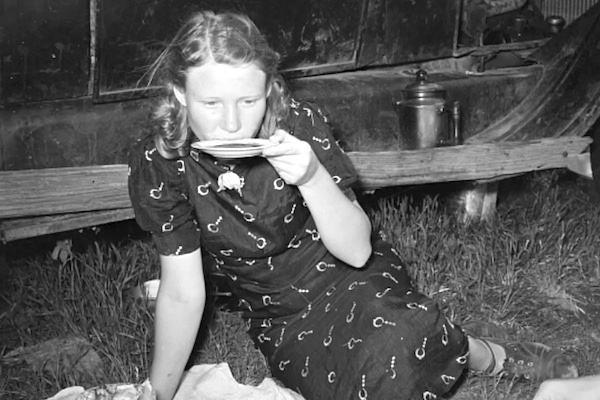
IV. “Once you wake up and smell the coffee, it’s hard to go back to sleep.”—Fran Drescher
“All aboard,” cried the conductor as the steam whistle underscored his cry.
“Oh, dear, the train’s leaving,” said a traveler at the lunch counter, “and my coffee’s too hot to drink.”
“Drink mine, ma’am—hit’s already been saucered and blowed,” said a gentleman in the days before Styrofoam. Thanking this stranger, she gulped down his coffee, collected her sandwich, and ran to catch the train.
Unpacking this sketch, please note that the anxious traveler is addressed as “Ma’am”; the gentleman may not have dotted all his “i’s,” but he’s polite and generous; trains have never waited for anyone, and coffee is central to these two lives. Indeed, across the globe, life without coffee is simply unthinkable.
The woman in the sketch above was the mother of Dr. Malcolm Usrey, a colleague whose family moved from Georgia to Texas in search of better land and better coffee around 1920. They settled in a fertile valley in East Texas with good access to traders coming up from Galveston and teamsters traveling south. For many American farm wives like Mrs. Usrey, tea was not her cup of coffee. Indeed, coffee was the Usrey’s “Achilles’ tooth” as their son told me still bitter over the money wasted on those “sacred goddamn grounds.”
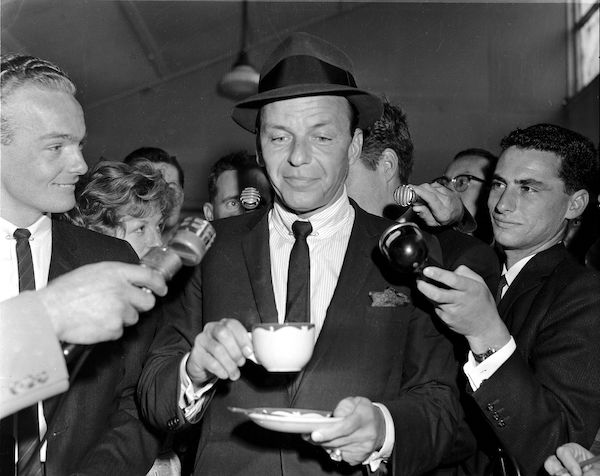
V. “A song writer is a device for turning coffee into music.”—The Wordspinner with a nod to Alfred Renyi.
In grade school circa. 1950, I recall listening to Frank Sinatra on my mother’s kitchen radio singing, “You date a girl and find out later/she smells just like a percolator.” (What took him so long, I wondered.) “Her perfume was made right on the grill./Why they could percolate the ocean in Brazil.” This caffeinated hit was followed shortly by the Inkspots’ singing, “Waiter, waiter, percolator!/I love coffee, I love tea./I love the java jive/and it loves me.” For a ten-year old in love with limericks and double rimes, these lyrics featured what I would later call “sublime nub-rimes.”
By the time I turned a respectable dating age, country balladeer Lefty Frizzell was singing, “Smoking cigarettes and drinking coffee all night long/wondering how a love so right could suddenly go wrong . . . . .” Having never fallen in love nor tasted coffee, I could only wonder why anyone would drink anything all night.
I don’t think I tasted coffee until I began shift work in the army along the old East-West German border. A “cuppa joe” around 2 a.m. kept my eyes on my oscilloscopes until I was relieved six hours later. In Helmstedt, the nearest city of any size, I discovered with my future wife’s help the Café Förster, a coffee and pastry shop founded in 1902, which impressed me as the epitome of polite Prussian society, positioned down the street from the bars I’d once inhabited. My mother-in-law found this downtown café expensive and clubby, so she ground and brewed her own coffee, baked a fruit tart depending on the season, and served Kaffee und Kuchen most afternoons.
Over the next decade, more and more caffeine was needed to shield me from reality, and by the time I was an instructor at Clemson, my eyes didn’t shut when I sneezed. With help from my wife, who agreed not to buy any more Jamaican Blue Mountain, I switched to unsweetened tea. A few years later when a Starbucks opened about four miles from our home, one word I’d heard our granddaughter use instantly crystalized my whole caffeinated enterprise: “crapuccino.”
Coffee, a parapsychotic friend warned when I told him I was writing about it, “shrinks the brain’s pineal gland, the most spiritual gland in the human body. In spiritual lore,” he elaborated, “coffee was cleverly designed by the Dark Hats to make humans less spiritual, less in touch with God, not only because it would shrink the pineal gland, but because it is addictive. Imagine, if you will, trying to meditate and get in touch with God after you have been supercharged with coffee, and your damaged pineal gland can no longer generate melatonin. It ain’t gonna happen!”
Recently, however, as I waffled among the mixed signals I was receiving, our granddaughter’s brother took a job as a Starbucks’ barista, and a Moe Joe’s has opened less than a mile from our door. As a further inducement to rejoin the ranks of coffee drinkers, I read a British study that concluded you’re c.15% less likely to die if you drink 1.5-3.5 cups of antioxidant-rich coffee a day. Caffeinated or decaffeinated, it doesn’t matter. And if you drink each cup with a teaspoon of sugar, the figure rises to c.30%. Seeking to cut the odds of dying by a third, and ignoring the Mayo Clinic’s warnings that coffee is a diuretic, I resumed my quest for coffee that is worthy of being served alongside my wife’s chocolate cake with cream-cheese icing. I thought I’d found my brand when I noticed that on the days I mixed a level coffee spoon of instant decaf with a heaping teaspoon each of sugar and cream, I rose to pee on average five times a night. When I drank decaf tea or water, I rose one or two times a night. For the moment, the Dark Hats have won.

To order copies of Skip Eisiminger’s Letters to the Grandchildren (Clemson University Digital Press), click on the book cover below or contact: Center for Electronic and Digital Publishing, Strode Tower, Box 340522, Clemson SC 29634-0522. For Wordspinner: Mind-Boggling Games for Word Lovers, click on the book cover.

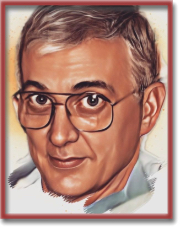


3 Comments
Skip Eisiminger
When did I sit for this flattering portrait?
Another cup of coffee may help me remember.
Skip
Randy Rayfield
Back in my storytelling days, I developed several yarns about coffee. One of my best received story was about weasel coffee. Told it at several events and always got favorable comments. Another one was how Maxwell Coffee got its slogan. I think you would find the weasel coffee story interesting. If you will provide me with an email (postal) address, I would like to send. My email address is randyr1904@gmail.com. Sincerely, Randy Rayfield
judy
“Any date before 1450 is considered “BC,” “before coffee….” Gives new meaning to history.